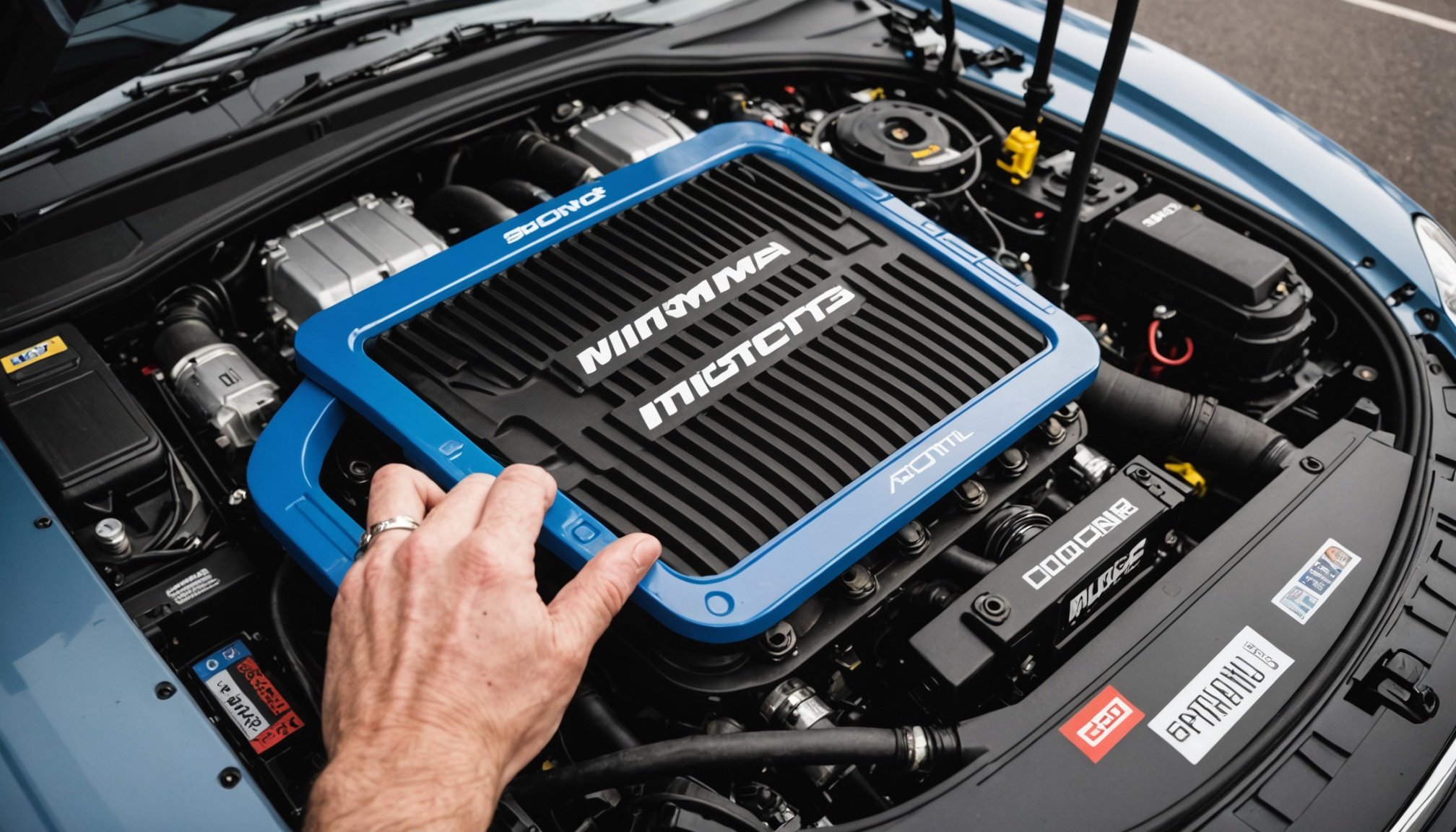Overview of Performance Chips
Performance chips are integral components used in car modifications to enhance the vehicle’s overall performance. Performance chips are electronic devices integrated into a vehicle’s engine management system to alter fuel injection, timing, and other factors, boosting efficiency and power output. They are a popular choice for those looking to unlock the full potential of their cars, particularly in UK-spec cars where performance regulations may be stringent.
There are several types of performance chips designed for UK vehicles. These include piggyback chips and standalone ECU systems. Piggyback chips work alongside the car’s existing ECU, modifying signals to optimize performance. Standalone ECUs, on the other hand, completely replace the factory ECU to allow for extensive customisation. Each type serves different tuning needs and levels of modification, making them versatile choices.
Topic to read : Step-by-Step Guide to Installing a Custom Air Suspension System for UK Show Cars
The benefits of these chips in enhancing vehicle performance are extensive. They can increase horsepower, improve throttle response, and enhance fuel economy. For UK-spec cars, which often adhere to strict environmental standards, performance chips can also help engines perform optimally without compromising compliance. By integrating performance chips, car enthusiasts can achieve improved driving dynamics and efficiency.
Installation Process for Performance Chips
Installing performance chips in your vehicle requires precision and attention to detail, making it a task best approached with thoroughness. Let’s delve into the essentials you’ll need to understand for a seamless car tuning experience and successful installation steps.
Have you seen this : Step-by-Step Guide: Installing an Aftermarket Sunroof in Your UK Car
Required Tools and Equipment
Before embarking on the installation process, gather the necessary tools. These typically include a set of screwdrivers, pliers, socket wrench set, and electrical tape. Additional equipment might involve a laptop for digital adjustments in certain vehicle models. Having these tools on hand ensures a smooth installation process.
Safety Precautions
Safety is paramount when handling vehicle electronics. Ensure the car is turned off, and disconnect the battery to avoid any potential electrical hazards. Wearing rubber gloves can add an extra layer of safety against static electricity. Conducting a thorough safety check can prevent accidents and ensure component integrity.
Step-by-Step Installation Guide
- Disconnect the Vehicle’s Battery: Safeguard electrical components.
- Access the ECU (Engine Control Unit): Locate the ECU following your car model’s manual.
- Remove the Old Chip: Carefully detach with pliers to avoid damage.
- Install the New Performance Chip: Align and fit it securely into the ECU.
- Reconnect the Battery: Finalize the process by powering your vehicle back on.
Following these installation steps aids in optimizing car performance while enhancing the tuning experience.
Tuning Performance Chips
To enhance car performance, understanding tuning and its significance is essential. Tuning involves adjusting a vehicle’s engine control unit (ECU) to optimise efficiency and power. By modifying parameters such as air-fuel mixture, ignition timing, and turbo boost, tuning elevates the vehicle’s performance capabilities.
In the UK, diverse tuning methods cater to various models, each with specific needs and potentials. Software tuning is one popular approach, known as remapping. This method involves rewriting the ECU’s software to modify torque and horsepower outputs. It’s a versatile solution, often offering different mapping profiles to suit diverse driving styles.
In contrast, hardware modifications provide another avenue for tuning performance chips. These include upgrading components like turbochargers, exhaust systems, and air filters to maximize airflow and combustion efficiency. This approach benefits from tangible changes, which can often lead to more significant power gains than software adjustments alone.
The combination of software and hardware options usually yields the best results, balancing convenience and impact. A well-tuned vehicle offers improved acceleration, enhanced fuel efficiency, and a smoother driving experience. Therefore, for car enthusiasts and everyday drivers alike, investing time in understanding and applying effective tuning methods is immensely rewarding.
Compatibility Considerations
When considering performance chips for UK vehicles, understanding compatibility is crucial. A mismatch can lead to suboptimal results or even long-term vehicle damage, so this consideration shouldn’t be overlooked.
Identifying Compatible Models
To ensure a performance chip is compatible, start by identifying your vehicle’s make, model, and year. Each chip is engineered to optimise specific engine types and electronic systems. Consult the manufacturer’s specifications and cross-reference them with your vehicle’s details to confirm suitability.
Common Brands and Their Compatibility
Several brands are known for producing chips compatible with UK-spec vehicles. Brands such as RaceChip, Superchips, and Quantum Tuning offer models tailored to match the local market. It’s advisable to choose brands that provide detailed guidelines about which vehicles their chips best serve.
Customer Experiences with Compatibility Issues
Customers often share experiences about compatibility challenges on forums and review sites. To mitigate risks, consider these testimonials. Many users emphasise verifying details directly with manufacturers to avoid common pitfalls.
- Superchips is praised for its user-friendly installation guide.
- RaceChip users often appreciate their customer support team’s readiness to address compatibility concerns.
By selecting reputable brands and tapping into community insights, you can enhance your vehicle’s performance without unsettling complications.
Benefits of Installing Performance Chips
Installing performance chips can significantly enhance your vehicle’s performance and deliver notable improvements. One of the primary benefits is the potential increase in horsepower and torque, which offers a more powerful driving experience. Such enhancements allow your car to accelerate quicker and handle challenging terrains effortlessly.
Another crucial advantage is the positive impact on fuel efficiency. By optimising fuel usage, performance chips help reduce consumption, leading to cost savings over time. This is particularly beneficial for UK-spec cars that undergo frequent changes in driving conditions, as it ensures they run more economically without compromising on power.
Moreover, performance chips can contribute to lowering vehicle emissions. By fine-tuning the engine control unit, these chips help maintain a cleaner burn of fuel, supporting environmentally conscious driving and helping to meet emission standards.
Lastly, the long-term performance benefits of installing performance chips are significant. These chips can result in less strain on your engine by ensuring it functions at its optimum level, ultimately prolonging the lifespan of the vehicle. Owners can enjoy a dynamic driving experience while protecting their investment. By incorporating performance chips, you’re essentially enhancing your vehicle’s potential, efficiency, and sustainability.
Legal Considerations
Understanding the legal aspects of car modifications in the UK is vital. Not only could unapproved modifications affect your compliance with regulations, but they might also lead to insurance issues or emissions non-compliance. Let’s delve into these areas for clarity.
UK Regulations on Car Modifications
The UK has clear rules about vehicle alterations. Every car modification should meet performance modifications standards that ensure safety and efficiency. This involves using approved components and complying with technical standards. Without adherence, the modifications might be considered illegal, impacting roadworthiness.
Insurance Implications
When it comes to performance modifications, insurance implications are significant. You must inform your insurer about every change made to your vehicle. Failure to do so can result in the invalidation of your policy. Modifications often increase risk and may lead to higher premiums. Always check with your provider about coverage adjustments.
Emissions Compliance
Staying within emissions standards is essential. Modifications could affect your vehicle’s emissions output, potentially resulting in non-compliance with UK regulations. This might include exceeding emissions compliance levels, which can incur fines or penalties. Therefore, it’s crucial to ensure that any changes align with legal thresholds, maintaining your vehicle’s eco-friendliness.
Troubleshooting Common Issues
Even though performance chips can boost your car’s tuning potential, encountering problems is not uncommon. Recognising common problems early ensures smoother operations. Let’s explore some frequent issues and their solutions.
One predominant issue is incorrect installation. A misaligned chip often leads to reduced efficiency. To tackle this, meticulously follow the manufacturer’s guidelines. Ensure all connections are secure, and consult your car’s specific tuning guide. Additionally, using certified tools can significantly improve installation accuracy.
Another prevalent problem involves the need to reset and recalibrate the chip. To do this, disconnect the chip and wait a few moments before reconnecting. This simple action often resolves minor malfunctions. For a comprehensive recalibration, refer to your chip’s manual or an authorised online resource.
If issues persist, accessing further support is crucial. A plethora of resources are available, from online forums and videos to direct contact with chip manufacturers. Engaging with user groups can provide fresh insights and shared experiences.
Always consider professional services when troubleshooting doesn’t resolve the issue. Expert intervention not only guarantees accurate diagnostics but also prolongs your performance chip’s lifespan. By staying informed and proactive, you’ll ensure optimal car tuning and performance.
Recommended Performance Chips
When evaluating the best performance chips on the market, several considerations come into play, including performance gains, compatibility with your vehicle, and overall value. Here’s a deep dive into some top brands and their offerings.
Review of Popular Products
A few performance chips have gained widespread acclaim for their enhancements in speed, torque, and fuel efficiency. Among these, the RaceChip GTS Black and Superchips Flashpaq F5 are frequently mentioned for boosting engine performance effectively without compromising on car health. They often provide customizable tuning options tailored to different driving styles, making them highly sought after by driving enthusiasts. Notably, these chips ensure compliance with UK vehicle specifications, promising an aerodynamic balance between power and control.
Price Range and Value Comparison
Prices of performance chips vary significantly based on features and brand reputation. Entry-level options start around £100, offering basic performance upgrades. On the higher end, options like the ECU Remap solutions can exceed £500, but they promise advanced tuning capabilities and integration with existing vehicle systems. When selecting a chip, weigh these costs against potential fuel savings and enhanced driving pleasure.
User Testimonials and Case Studies
Real-world feedback from users provides insight into the tangible benefits of these chips. Many attest to improved fuel economy and a noticeable increase in engine responsiveness. Case studies, particularly from urban drivers, point out significant reductions in fuel consumption after installing a recommended performance chip, validating their effectiveness in diverse driving conditions.
Visual Aids and Resources
Installing technology can be daunting without proper guidance. Visual aids play a crucial role in simplifying complex installations. They provide step-by-step instructions, making it easier for beginners and experienced users alike to perform complex tasks with confidence.
To begin, installation videos stand out as one of the most effective resources for learning. Watching a process unfold visually, rather than relying solely on text instructions, offers clarity and can prevent common mistakes. Several online platforms host a variety of these videos, ensuring that you can find one tailored to your specific needs. These resources allow users to pause, rewind, and replay sections until they are comfortable with every step.
Guides also prove invaluable during installation. Often coupled with visual aids, detailed guides offer comprehensive information on each stage of an installation, providing explanations and troubleshooting tips. While these guides can sometimes be text-based, they frequently include diagrams or pictures to enhance comprehension.
Furthermore, many digital platforms include interactive or downloadable guides directly within their content. This means you can conveniently access all necessary information without navigating away from the task at hand. Such embedded resources ensure a seamless learning experience. Together, these visual aids and resources create a robust framework to support users throughout their installation journey.











